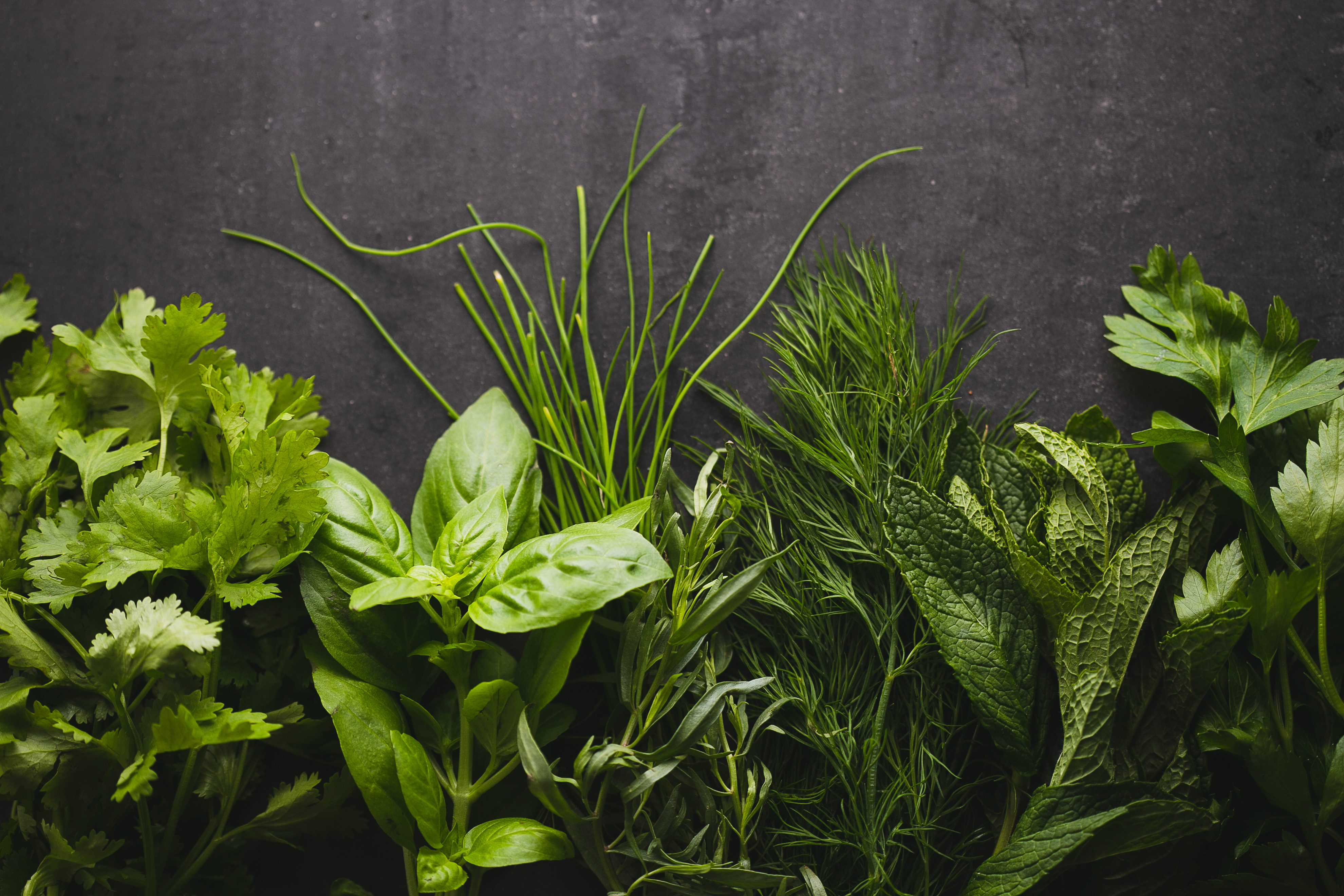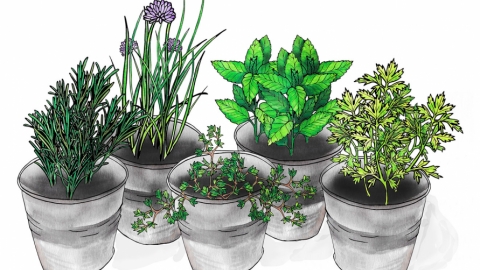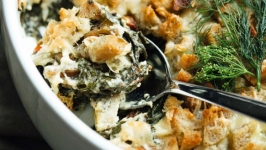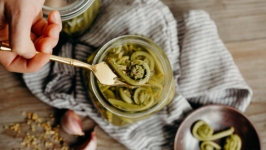In-Season: Tender Herbs
Some of my favorite kitchen pleasures involve herbs: the magic of chive blossoms soaked in vinegar in the spring, fragrant basil in the thick of tomato season, mint muddled at the bottom of a tall drinking glass, dill tucked into a row of pickle jars, cilantro or parsley by the handful in a salad, or tarragon tossed with charred green beans. Once I discovered how easy they are to grow and how revolutionary they are in the kitchen, I started tucking these plants into the soil and snagging them from the market at each opportunity.
Every tender herb is at its best immediately after harvesting. However, if appropriately stored, tender herbs can last up to 3 weeks once harvested. Wash all herbs and discard any that are bruised or wilting. Dry with a salad spinner or blot with paper towels. For cilantro, parsley, mint, dill and tarragon, snip off the end of the stems and place in a jar with a few inches of water. Cover the herbs with an overturned plastic bag and secure the bag with a rubber band. Store in the refrigerator and change the water often. For basil, snip off the ends of the stems and place them in a jar of water. Leave uncovered and store at room temperature; cold air will turn the leaves brown. Washed chives can be rolled in a damp paper towel and placed in a plastic bag in the refrigerator.
Although you may lose some flavor, tender herbs can also be dried or frozen to use all winter long. Since tender herbs mold quickly, the best way to dry them is by using a dehydrator. Once dry, store covered in a cool, dark place and use within 6 to12 months. To freeze, fill a silicone ice cube tray with chopped herbs. Pour water (perfect for cocktails or garnishing) or olive oil (perfect for soups, dressings and marinades) over the herbs and place in the freezer. Store the frozen cubes in a zip-top bag and use within 6 to12 months.
Chives:
The first tender herb to pop up in garden each spring, chives are a perennial flowering plant closely related to alliums such as onions, garlic, scallions and leeks. The green stalks (scapes) and purple flowers are completely edible and have a mild onion-like flavor. Pair with eggs, potatoes, soups and salads.
Basil:
Native to tropical regions and grown as an annual in the Michiana area, basil is slightly sweet with notes of black pepper and anise. Avoid leaves that are wilting or have dark spots. Basil is the main ingredient in pesto and pairs well with heirloom tomatoes, mozzarella cheese, pizza, pasta, grilled chicken and fruit.
Dill:
Part of the celery family and closely related to parsley and fennel, dill is cultivated for both the leaves and seeds. The delicate fern-like leaves have a grassy flavor with subtle anise undertones. The yellow umbels (flower clusters) can be tucked into jars of pickles or left to mature for harvesting seeds. Dill is perfect for pickled vegetables, borscht, potato dishes, eggs, creamy dips, salads, seafood and sauces.
Parsley:
Parsley, closely related to carrots and celery, is used heavily in European, Middle Eastern and American cuisines. The leaves are curly or flat; both varieties have a bright, earthy and clean flavor, which is why it is often used as a garnish on savory meat dishes. Parsley pairs well with soups, stocks, salads, meat, beans and grains.
Mint:
Mint, a perennial herb, is cultivated for its tender aromatic leaves, which are bold and sweet and leave a cooling aftertaste on the tongue. Essential oils extracted from mint leaves are used to flavor toothpaste, chewing gum and candy. Beyond freshening one’s breath, mint is commonly used in herbal teas and cocktails such as the mojito. Mint pairs well with lamb, chocolate, curries and fruit.
Tarragon:
There are two primary varieties of tarragon: French and Russian. French is the variety most often used for cooking because of its more robust flavor. French tarragon is not strong compared to other tender herbs, but its delicate licorice flavor adds a sophisticated touch to dishes. Tarragon pairs well with lemon, lime, butter, asparagus, green beans, chicken, fish, eggs and potatoes.
Cilantro:
Known as coriander in most of the world, cilantro is harvested for the seeds, leaves and roots. It is used extensively in Mexican cuisine and is grown annually in our region. Most individuals enjoy the tart, citrusy flavor of cilantro leaves, but some unfortunate souls were born with a gene that perceives the soapy-tasting aldehydes in cilantro leaves in abundance. The seeds, known as coriander in the US, taste different than the leaves and cannot be used interchangeably. The roots are commonly used in Thai cooking. Use cilantro leaves in salsa, guacamole, chutney, salad, soups and sauces.
Ashley Swartzendruber is Edible Michiana’s recipe editor, stylist and photographer based in Goshen, Indiana. She can be found cooking, eating and photographing local food in her home or exploring Michiana with her family. You can find more of her photos, styling and motherhood musings on her Instagram @mywildhaven.










